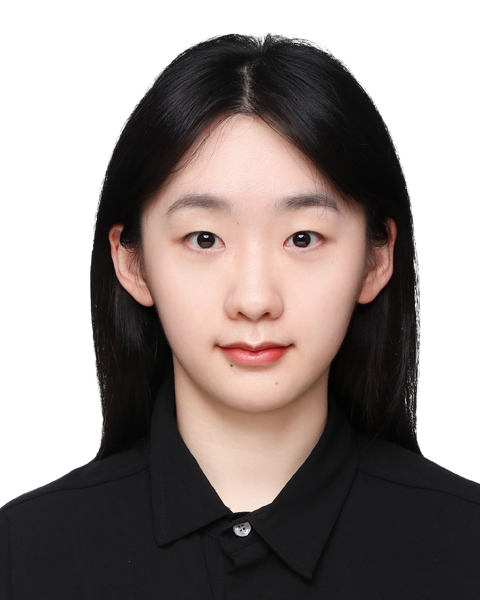PQA 01 - PQA 01 Lung Cancer/Thoracic Malignancies and Diversity, Equity and Inclusion in Healthcare Poster Q&A
2053 - Integrating CT Images and Radiotherapy Dose Distribution Maps to Predict the Progression-Free Survival in Locally Advanced Non-Small Cell Lung Cancer Patients
Sunday, September 29, 2024
2:45 PM - 4:15 PM ET
Location: Hall C
Screen: 11

Runping Hou, PhD
Shanghai Chest Hospital Shanghai Jiao Tong University
Shanghai, Shanghai
Presenter(s)
R. Hou, W. Xia, and X. L. Fu; Department of Radiation Oncology, Shanghai Chest Hospital, Shanghai Jiao Tong University School of Medicine, Shanghai, China
Purpose/Objective(s): Patients with locally advanced non-small cell lung cancer (LA-NSCLC) exhibit variable prognosis despite undergoing standard treatments. Biomarkers that can reliably predict disease progression of LA-NSCLC are lacking. This study aimed to develop a multi-modal fusion model based on computed tomography (CT) images and radiotherapy dose distribution maps to predict the progression-free survival (PFS) in LA-NSCLC patients. Materials/
Methods: A retrospective cohort of 329 LA-NSCLC patients who underwent definitive radiotherapy was collected. The cohort was randomly divided into a development set and an independent testing set in a ratio of 2:1. A novel multi-modal deep survival prediction model was proposed to extract prognostic information from primary tumors and involved lymph nodes. The model comprises two branches, each consisting of a 3D convolutional neural network (CNN) built on CT images and dose distribution maps, respectively. Image patches covering the tumor and lymph nodes are inputted, and deep features from both branches are combined to construct the multi-modal fusion model. Additionally, a Clinical-alone model was developed for comparison purposes. This model employed multivariate Cox proportional hazard regression and incorporated relevant clinical factors such as age, stage, prescribed dose, radiotherapy mode, and consolidation therapy. Model performance was assessed using the concordance index (C-index) and time-dependent area under receiver operating characteristic curve (AUC) values.
Results: The constructed multi-modal fusion model demonstrates effective prediction of PFS in LA-NSCLC patients, with time-dependent AUC values at 1, 2 and 3 years of 0.859, 0.770, and 0.728 in the development set, and 0.707, 0.724 and 0.677 in the testing set. This performance surpasses that of the Clinical-alone model, which yielded AUCs of 0.672, 0.714, and 0.735 at 1, 2, and 3 years in the development set, and AUCs of 0.568, 0.571, and 0.636 at 1, 2, and 3 years in the testing set, respectively. In addition, the C-index value of the multi-modal fusion model significantly outperformed the Clinical-alone model in the independent testing set (C-index: 0.677 VS 0.591, P = 0.007). Furthermore, our multi-modal fusion model can significantly stratified patients into high-risk and low-risk subgroups for PFS in the development set and independent testing set (P < 0.001, Hazard ratio=0.364, 95% CI: 0.234-0.564).
Conclusion: The established multi-modal fusion model can help improve the prediction of PFS in LA-NSCLC patients, which can guide clinicians in identifying high-risk patients that need to optimize the treatment regimens, thus potentially improving patient outcomes.
Purpose/Objective(s): Patients with locally advanced non-small cell lung cancer (LA-NSCLC) exhibit variable prognosis despite undergoing standard treatments. Biomarkers that can reliably predict disease progression of LA-NSCLC are lacking. This study aimed to develop a multi-modal fusion model based on computed tomography (CT) images and radiotherapy dose distribution maps to predict the progression-free survival (PFS) in LA-NSCLC patients. Materials/
Methods: A retrospective cohort of 329 LA-NSCLC patients who underwent definitive radiotherapy was collected. The cohort was randomly divided into a development set and an independent testing set in a ratio of 2:1. A novel multi-modal deep survival prediction model was proposed to extract prognostic information from primary tumors and involved lymph nodes. The model comprises two branches, each consisting of a 3D convolutional neural network (CNN) built on CT images and dose distribution maps, respectively. Image patches covering the tumor and lymph nodes are inputted, and deep features from both branches are combined to construct the multi-modal fusion model. Additionally, a Clinical-alone model was developed for comparison purposes. This model employed multivariate Cox proportional hazard regression and incorporated relevant clinical factors such as age, stage, prescribed dose, radiotherapy mode, and consolidation therapy. Model performance was assessed using the concordance index (C-index) and time-dependent area under receiver operating characteristic curve (AUC) values.
Results: The constructed multi-modal fusion model demonstrates effective prediction of PFS in LA-NSCLC patients, with time-dependent AUC values at 1, 2 and 3 years of 0.859, 0.770, and 0.728 in the development set, and 0.707, 0.724 and 0.677 in the testing set. This performance surpasses that of the Clinical-alone model, which yielded AUCs of 0.672, 0.714, and 0.735 at 1, 2, and 3 years in the development set, and AUCs of 0.568, 0.571, and 0.636 at 1, 2, and 3 years in the testing set, respectively. In addition, the C-index value of the multi-modal fusion model significantly outperformed the Clinical-alone model in the independent testing set (C-index: 0.677 VS 0.591, P = 0.007). Furthermore, our multi-modal fusion model can significantly stratified patients into high-risk and low-risk subgroups for PFS in the development set and independent testing set (P < 0.001, Hazard ratio=0.364, 95% CI: 0.234-0.564).
Conclusion: The established multi-modal fusion model can help improve the prediction of PFS in LA-NSCLC patients, which can guide clinicians in identifying high-risk patients that need to optimize the treatment regimens, thus potentially improving patient outcomes.
